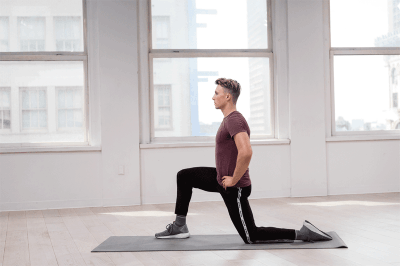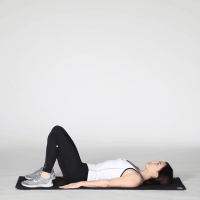Imagine waking up every morning with stiffness and pain in your spine, making it a challenge to even get out of bed. Ankylosing spondylitis (AS) is a chronic inflammatory condition that can turn this scenario into a daily reality for those who suffer from it. This condition primarily targets the spine and sacroiliac joints, causing pain, stiffness, and reduced mobility. But here’s the good news: while AS doesn’t have a cure, there are powerful tools available to manage its symptoms and improve your quality of life. One of these essential tools is physical therapy. In this blog, we will delve into the world of ankylosing spondylitis physical therapy, uncovering how it can alleviate pain, and enhance mobility.
Contents
Common Causes Of Ankylosing Spondylitis
Ankylosing spondylitis (AS) is a complex and often enigmatic condition with no single, definitive cause. However, researchers have made significant strides in understanding the factors that contribute to the development of AS. It’s crucial to recognize that while specific causes remain elusive, there are known risk factors that may increase an individual’s susceptibility to this condition.
- Genetic Predisposition: One of the most significant factors associated with AS is genetics. It’s well-established that AS tends to run in families, and individuals with a family history of the condition are at a higher risk. Specific genes, particularly the HLA-B27 gene, are strongly linked to AS. Having the HLA-B27 genetic marker doesn’t guarantee the development of AS, but it does increase the risk.
- Immune System Dysregulation: AS is classified as an autoimmune disease, which means the immune system mistakenly attacks the body’s tissues. In AS, the immune system targets the joints, leading to inflammation and damage. The exact triggers for this immune response are still under investigation.
- Environmental Factors: While genetics play a dominant role, environmental factors may also contribute to the development of AS. Infections, particularly in the gastrointestinal tract, have been proposed as potential triggers. These infections may interact with genetic susceptibility to initiate the autoimmune response seen in AS.
- Gender and Age: AS is more commonly diagnosed in men than in women, with a male-to-female ratio of about 3:1. Additionally, the condition typically begins in late adolescence or early adulthood, with most diagnoses occurring between the ages of 17 and 45.
- Ethnicity: AS is more prevalent in certain ethnic groups, including individuals of Caucasian and Asian descent, although it can affect people of all races.
The Role Of Physical Therapy In Managing Ankylosing Spondylitis 
One important aspect of ankylosing spondylitis management is physical therapy. It offers numerous benefits that can significantly enhance an individual’s well-being.
- Pain Reduction: Pain is one of the most common and debilitating symptoms of AS. Physical therapists are trained to assess an individual’s pain and develop tailored strategies to alleviate discomfort. Through various techniques, such as manual therapy, heat therapy, and gentle exercises, physical therapists can help reduce pain and improve overall comfort.
- Improved Mobility: Stiffness and reduced range of motion in the spine and joints are hallmark symptoms of AS. Physical therapists employ specialized exercises and stretching routines to enhance flexibility and restore normal movement patterns.
- Posture Correction: AS can lead to changes in posture, including a forward-leaning or stooped position. Physical therapists work with individuals to address these postural issues through targeted exercises and posture training. Maintaining proper alignment can prevent further spinal deformities and improve overall appearance and confidence.
- Strengthening Weak Muscles: Muscles surrounding the spine and affected joints can weaken due to inactivity or pain avoidance. Physical therapy includes strength training exercises that target these muscle groups, helping to stabilize the spine and prevent further complications.
- Education and Self-Management: Beyond in-office sessions, physical therapists educate individuals about AS, its progression, and self-management techniques.
- Breathing Exercises: AS can affect the chest wall, leading to restricted lung capacity. Physical therapists can teach breathing exercises to improve lung function, enhance oxygen exchange, and promote better respiratory health.
- Pain Management Strategies: Physical therapists often incorporate pain management techniques, such as hydrotherapy and modalities like ultrasound or electrical stimulation, to provide relief and reduce inflammation.
- Assistive Devices: In some cases, physical therapists may recommend assistive devices like canes or braces to aid mobility and reduce strain on affected joints.
Exercises To Manage Ankylosing Spondylitis
Here are some specific exercises that can help manage ankylosing spondylitis (AS) by improving flexibility, strength, and posture. Remember to consult with a healthcare professional or physical therapist before starting a new exercise routine, especially if you have ankylosing spondylitis.
Neck Stretch
- Sit or stand up straight.
- Slowly tilt your head to one side, bringing your ear toward your shoulder.
- Hold for 15-30 seconds.
- Repeat on the other side.
- Perform 2-3 repetitions on each side.
Spinal Rotation
- Sit on a chair with your feet flat on the floor.
- Cross your arms over your chest.
- Gently twist your upper body to one side, looking over your shoulder.
- Hold for 15-30 seconds.
- Return to the center and repeat on the other side.
- Do 2-3 sets on each side.
Chest Opener Stretch
- Stand with your feet hip-width apart.
- Clasp your hands behind your back.
- Straighten your arms and gently lift them while squeezing your shoulder blades together.
- Hold for 15-30 seconds.
- Release and repeat 2-3 times.
Hip Flexor Stretch
- Kneel on one knee with the other foot in front.
- Shift your weight forward, keeping your back straight, until you feel a gentle stretch in the front of your hip.
- Hold for 15-30 seconds.
- Repeat on the other side.
- Perform 2-3 sets on each side.
Bridge Exercise
- Lie on your back with your knees bent and feet flat on the floor.
- Tighten your glutes and lift your hips off the ground, creating a straight line from your shoulders to your knees.
- Hold for a few seconds, then lower your hips.
- Perform 10-15 repetitions for 2-3 sets.
Wall Angels
- Stand with your back against a wall, feet about a foot away from the wall.
- Raise your arms, keeping your elbows, wrists, and the back of your hands touching the wall.
- Slowly slide your arms up and down the wall while maintaining contact.
- Do 10-15 repetitions for 2-3 sets.
Cat-Cow Stretch
- Start on your hands and knees in a tabletop position.
- Inhale and arch your back, lifting your head and tailbone (cow position).
- Exhale and round your back, tucking your chin (cat position).
- Flow between these two positions for 1-2 minutes.
Pelvic Tilts
- Lie on your back with your knees bent and feet flat.
- Tighten your abdominal muscles and gently tilt your pelvis upward, pressing your lower back into the floor.
- Hold for a few seconds, then release.
- Perform 10-15 repetitions for 2-3 sets.
Other Treatments For Ankylosing Spondylitis 
In addition to physical therapy for managing ankylosing spondylitis some other treatment methods can also be used. Some other treatment options include:
- Medications: Nonsteroidal Anti-Inflammatory Drugs (NSAIDs) like ibuprofen and naproxen are often prescribed to manage pain and inflammation associated with AS. Disease-modifying antirheumatic drugs (DMARDs) like sulfasalazine may be considered to slow the progression of AS in some cases. Biologic medications can effectively reduce inflammation and pain in AS.
- Heat and Cold Therapy: Heat packs and cold packs can provide immediate relief from pain and stiffness. Heat therapy can relax muscles and improve blood flow, while cold therapy can reduce inflammation and numb painful areas.
- Injections: Corticosteroid injections into affected joints can provide short-term pain relief and reduce inflammation. These injections are typically administered by a rheumatologist or orthopedic specialist.
- Posture Training: Posture training programs, sometimes led by physical therapists, focus on teaching individuals with AS how to maintain good posture throughout their daily activities. Proper posture can help prevent spinal deformities and reduce pain.
- Surgery: While surgery is rarely necessary for AS, it may be considered in severe cases where spinal fusion severely limits mobility or causes complications. Surgical interventions aim to correct spinal deformities or replace damaged joints.
- Patient Education: Education is a vital component of AS management. Understanding the condition, its progression, and self-management techniques empowers individuals to actively participate in their care and make informed decisions.
Lifestyle Changes To Manage Ankylosing Spondylitis 
Here are some key lifestyle adjustments to consider:
- Regular Exercise: Engage in regular low-impact exercises like swimming, walking, or cycling to improve flexibility and strengthen muscles. Exercise can also help reduce pain and stiffness associated with AS.
- Adequate Rest: Get sufficient sleep and rest to help your body recover and reduce fatigue. Invest in a supportive mattress and pillows that align with your spine.
- Stress Management: Practice stress-reduction techniques such as meditation, yoga, or deep breathing exercises to manage stress. Stress can exacerbate AS symptoms.
- Diet and Nutrition: Maintain a balanced diet rich in fruits, vegetables, lean proteins, and whole grains. Some individuals with AS find relief from symptoms by following an anti-inflammatory diet.
- Weight Management: Maintain a healthy weight to reduce the strain on your joints, particularly the spine.
- Medication Adherence: Take prescribed medications as directed by your healthcare provider. Medications can help manage pain, and inflammation, and slow the progression of AS.
- Supportive Footwear: Choose comfortable, supportive shoes that provide proper arch support. Proper footwear can help reduce back and hip pain.
- Regular Check-Ups: – Attend regular check-ups with your rheumatologist or healthcare provider to monitor your AS and make necessary adjustments to your treatment plan.
Conclusion
In summary, physical therapy is a crucial component of managing ankylosing spondylitis (AS). It helps alleviate pain, enhance flexibility, and improve the overall quality of life for AS patients. By working closely with physical therapists and adhering to a tailored exercise regimen, individuals with AS can regain control over their mobility and minimize the impact of this chronic condition. Always consult with your healthcare provider and a qualified physical therapist to create a personalized plan that best suits your unique needs.
Physical Therapy helps patients recover from pain. If you’re experiencing Back, Shoulder, Knee, Neck, Elbow, Hip, or Arthritis pain, a physical therapist at PhysioMantra can help: Book an online physical therapy session.















